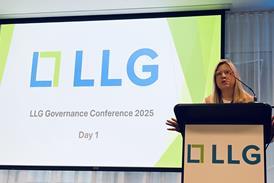The government has launched a review of the competition law collective actions regime to ensure it achieves redress for consumers while ‘limiting the burden on business’.
The review notes that ‘tens of billions of pounds’ have been paid in damages since the regime was introduced in 2015, with ‘hundreds of millions of pounds spent on legal fees’; far higher than the £30.8 million annual cost to business estimated in the original impact assessment.
The Department for Business and Trade launched the review on 6 August with an open call for evidence on the operation of the collective actions regime, focusing on four areas: the funding of cases; scope and certification; alternative dispute resolution, settlement and damages; and distribution of funds.
The review points out that as well as a significant growth in the opt-out caseload under the regime, the type of cases being brought has also developed in ‘unexpected ways’. In 2015 most cases were expected to be ‘follow on’ actions, where the Competition and Markets Authority (CMA) or European Commission have already investigated anti-competitive behaviour and made an adverse finding.

However, 90% of the current caseload now comprises standalone cases, where no regulatory investigation has yet been undertaken or concluded. Meanwhile only one case, Justin Le Patourel v BT Group, has reached judgment in the Competition Appeal Tribunal, with others generally ending in settlements, which means limited precedents are being set on key issues such as damages and distribution.
The review will examine ‘whether consumers are truly able to hold defendants to account in a way that is accessible, efficient, and proportionate.’ This will include examining ‘alternative routes’ that consumers could use, such as ADR and voluntary redress schemes, which may ‘reduce the burden on both consumers and businesses’.
The department said it was committed to reforming the consumer enforcement landscape in a way that delivers justice for consumers ‘without incentivising speculative competition claims’. The call for evidence seeks views on how best to ‘strike this balance’.
Questions in the evidence call include whether the regime is affordable; whether the way litigation funders share settlement sums is fair and proportionate; whether businesses have enough certainty over their level of liability under the regime; and whether businesses should sometimes be protected from liability, for example where they have cooperated with the CMA in a prior investigation.
The department said its review will also take account of any relevant existing work relating to the collective actions regime, including the Civil Justice Council’s June report on litigation funding.
David Greene, co-president of the Collective Redress Lawyers Association, said: ‘The opt-out regime under the Consumer Rights Act is relatively young, and like all fresh process regimes, is taking time to bed in. The regime is not perfect, but it seems to be early to be reviewing it from a business perspective, as the CAT and the Court of Appeal are working their way through the process and a body of law is developing.’
Greene added that the regime should be measured not just by the result of the tribunal process, but also the changes in corporate behaviour that it brings about.
Jeremy Marshall, chief investment officer at Winward Litigation Finance, commented: ‘This call for evidence is the product of the difficult experiences faced through the growing pains of the regime that have predominantly been experienced because of the successful defendant strategies of testing out every aspect of the new process. Class actions and litigation funding level a playing field which is naturally leaning towards very big businesses those with influence, power and money. It is no surprise that the defendants are seeking to do the industry down because they are aware that they cannot continue to have it their own way. It is to be hoped that the industry collectively responds to this latest challenge and demonstrates again that funding is in the interests of the Davids, and not the Goliaths.’
The call for evidence closes on 14 October.
This article is now closed for comment.



























11 Readers' comments